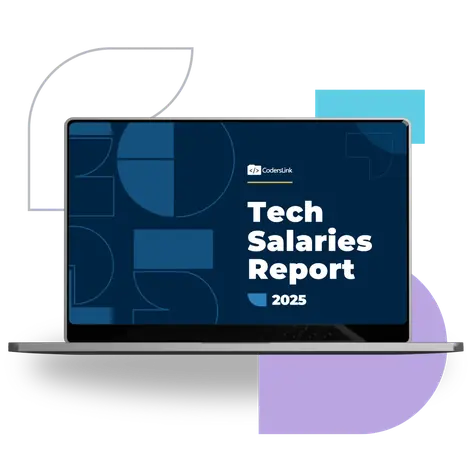
There have been several unicorn sightings in Mexico in the past few years. What does this mean?
It has helped put the Mexico IT industry on the map as one of the top talent sourcing and nearshoring destinations. The country’s diverse tech ecosystem and the remote work revolution has altered the way people see LATAM in the software industry and the global market at large.
The births of these unicorns (companies with a value over $1 billion) have caught the attention of investors and contributed to the tech culture and ecosystem in the region. Among the many changes in LATAM is the influence of Venture Capital. VC investment is a growing form of private equity in Latin America and just one aspect of the region’s growing potential in the tech sphere.
The trajectory of U.S. investment in the region has a long-standing history. Tech companies have established centers in Mexico since the 1960s. In the last few years, this has accelerated and seen many U.S. companies looking to invest in Mexican companies, nearshore to Mexico, or establish engineering centers there.
Let’s look at the key points and why LATAM and the Mexico IT industry are considered top places for sourcing talent, investing, and hiring software developers.
The COVID Shift and Growing Interest in an Unexpected Region
Latin America is vast and diverse. Major players in the region include Brazil (GDP $1.6 trillion), Mexico ($1.3 trillion), and Colombia ($314 billion). The nuances within the region are complex and difficult to narrow down.
Similar to all other parts of the world, LATAM was hit hard by the pandemic. By most estimates, Latin America lost 1.3 million people to the virus and suffered a profound blow to previous economic gains. LATAM suffered great losses and both social and economic consequences altered the region’s financial outlook.
For example, the commodity boom that occurred in the region between 2003 and 2013 took a downturn, but the disruption caused by covid opened up a surprising set of opportunities with investors, and companies seeking top tech talent. In the past few years alone, big companies like Google have expanded and opened up engineering centers in Mexico. At the same time, LATAM’s internet penetration—as reported by Atlantico’s Latin American Digital Transformation report— has surpassed that of regions like India and China.
Even before Covid hit, some investors were already sensing the shifting dynamic of the Latin American region in the software industry. This was known early on as the “LATAM thesis,” but not everyone saw the signs or believed in its premise.
And then there was Covid.
Increased Investment in LATAM 2021
Despite the uncertainty, by 2021, Latin America became the fastest-growing region for investment in the world. About 19.5 billion dollars poured into the region by venture and technology growth investors. According to Kearney, Mexico is LATAM’s 2nd private equity and VC market with more than $38 billion dollars from 2016 to 2021.
In 2022, that investment surge leveled out some. The upwards trend continued in the first quarter of 2022 marking the fourth-largest quarter on record for investment. As the year marched on, the numbers fell but reports vary in terms of the outlook for the region beyond 2022. One thing is certain: countries like Mexico are focused on the tech sector as an avenue toward growth and development.
According to Deloitte’s Latin America Economic Outlook report, the LATAM region has several opportunities to capitalize on changes in markets. The war in Ukraine, for example, has had a ripple effect across Latin America. While the conflict has disrupted trade and destabilized some sectors, it has also led many companies to switch their reliance on Eastern European service centers and look towards Latin America as an alternative for tech talent and outsourcing IT services.
Unicorn Sightings in Mexico
As LatamList points out, as of 2020 Mexico had yet to claim any unicorns. Since that time, Mexico has seen the growth of several unicorn companies including Kavak and Bitso.
IT recruiting in Mexico and other parts of the region has increased. Several VC funds in Latin America have contributed to the sense that the tech space in the region has some untapped potential. Local entrepreneurs, for example, have helped kickstart several VC funds and worked with U.S.-based funds.
The Mexico IT Industry and Tech Ecosystem
As the country with the 2nd highest GDP in the region, Mexico’s markets have seen notable transformation. Its economy is not without challenges. Foreign investment in other sectors (such as manufacturing) has stagnated due to new policies. In the tech sector, however, there is a growing talent pool and a startup culture fighting its way through.
The startup culture in several of the nation’s tech hubs like Guadalajara and Mexico City is multifaceted. It’s not just the outside investment that has played a role. Other forces at play involve a high rate of graduating software developers, a nationwide emphasis on tech education, and experienced entrepreneurs building new startups.
The relationship between Mexico and the U.S. has always been strong. Technology companies have been present there as early as the 1960s. In Guadalajara alone—Mexico’s Silicon Valley— one can find a long list of innovative American companies such as IBM, Amazon, HP, Google, Wizeline, and more.
As far as VC investment in the country, funds are up and running in industries such as FinTech, Consumer, and E-commerce. Mexico has got the talent in its midst to feed the demand that comes with growing investment and demand. The country graduates 130,000 engineers every year.
The Mexico IT industry has proven fertile ground for U.S. companies that are hard-pressed for talent in the U.S.
Tech Talent Shortage in the U.S. Looks to Mexico’s IT Industry for Relief
It’s no secret that Covid accelerated the need for companies to undergo a digital transformation. This led to increased demand for tech talent, IT workers, software developers, engineers, etc. This is true across the board. The problem in the United States is that companies are encountering major issues when it comes to sourcing the right talent.
Because of the tech talent shortage in the United States, American companies have looked to Mexico and Latin America as the ideal region for IT staffing solutions and IT recruiting.
Connect with Top Tech Talent in the Mexico IT industry
Recent investment gains in Mexico is only one aspect of the region’s potential. U.S. companies are paying attention to the country’s supply of tech talent.
It is often the logistical aspect of hiring in a different country, however, that deters U.S. companies from looking into the prospect. It’s true, Mexico labor laws vary widely and there are regional idiosyncrasies that can make things complicated for a company looking to jump in solo. Here at CodersLink, we take care of the HR question marks and navigate the labor laws for you.
The Mexican market is competitive. A lot has changed in the last few years. If you want to learn more about hiring tech talent in Mexico or the Mexico IT industry, connect with CodersLink today.


